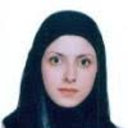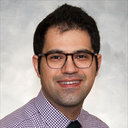A Case of Tuberous Sclerosis Without Multiorgan Involvement.
Atslēgvārdi
Abstrakts
Tuberous sclerosis or Tuberous sclerosis complex (TSC) is a relatively rare autosomal dominant and progressive neurocutaneous disorder involves multiple organs mainly brain, heart, kidney, lung, liver, skin and eye. The diagnosis is typically made clinically. Here, we are reporting a case of TSC presented mainly with dermatologic findings and only neurologic manifestations on MRI. A 15-year-old female with intellectual disability is followed up at neurology clinic for history of seizure. Intelligence evaluation showed that she has intellectual disability. She had wart like lesions distributed in form of butterfly over the face especially involving nose. She did not have any sign and symptom of heart, kidney, lung, bone and eye involvement. Also, her laboratory tests were normal. Despite the physical examination showed absolutely intact neurologic examination, but brain MRI and CT scan revealed several cortical and subcortical tubers, and subependymal glial nodules; no evidence of giant cell astrocytomas and aneurysm. Hypesignal foci are seen at subcortical white matter on long TR images. Fibers are involved. In this case, there is no evidence of giant cell astrocytomas and aneurysm. It seems that TSC could be the prevalent disorder and referring intellectual disability patients in birth with normal organs could be diagnosed as TSC. Therefore, there is necessary need to design genetic natal and post natal tests for diagnosis of TSC cases. Also, there is pivotal that similar cases must be reported; perhaps TSC is more prevalent than to be considered.




